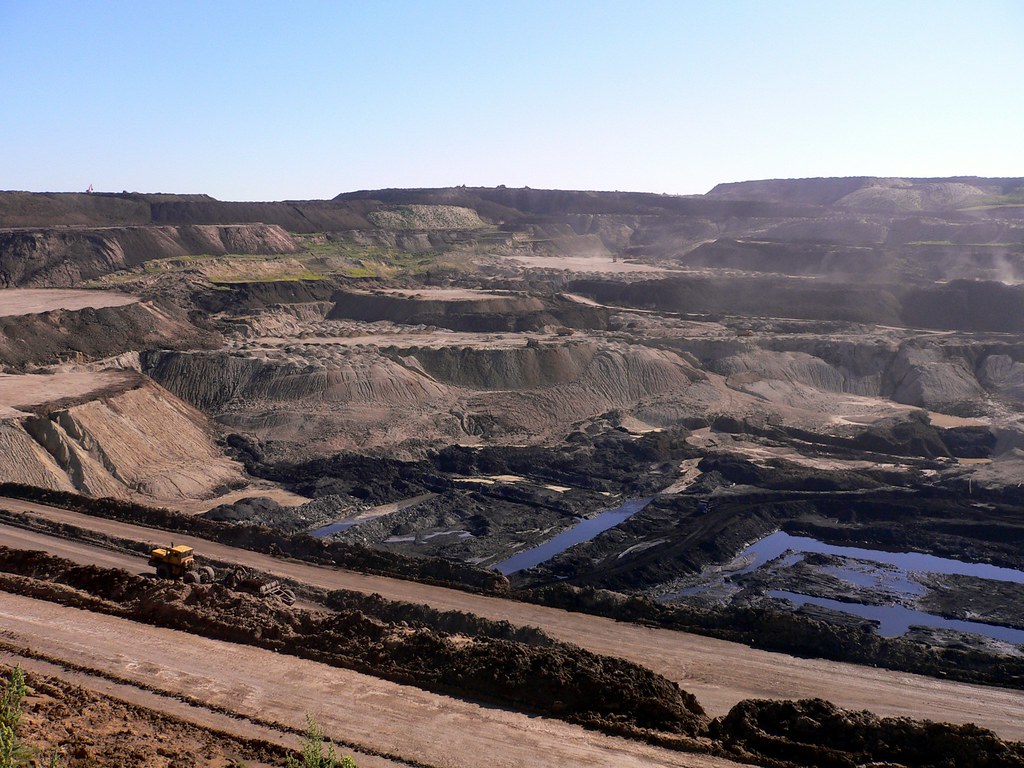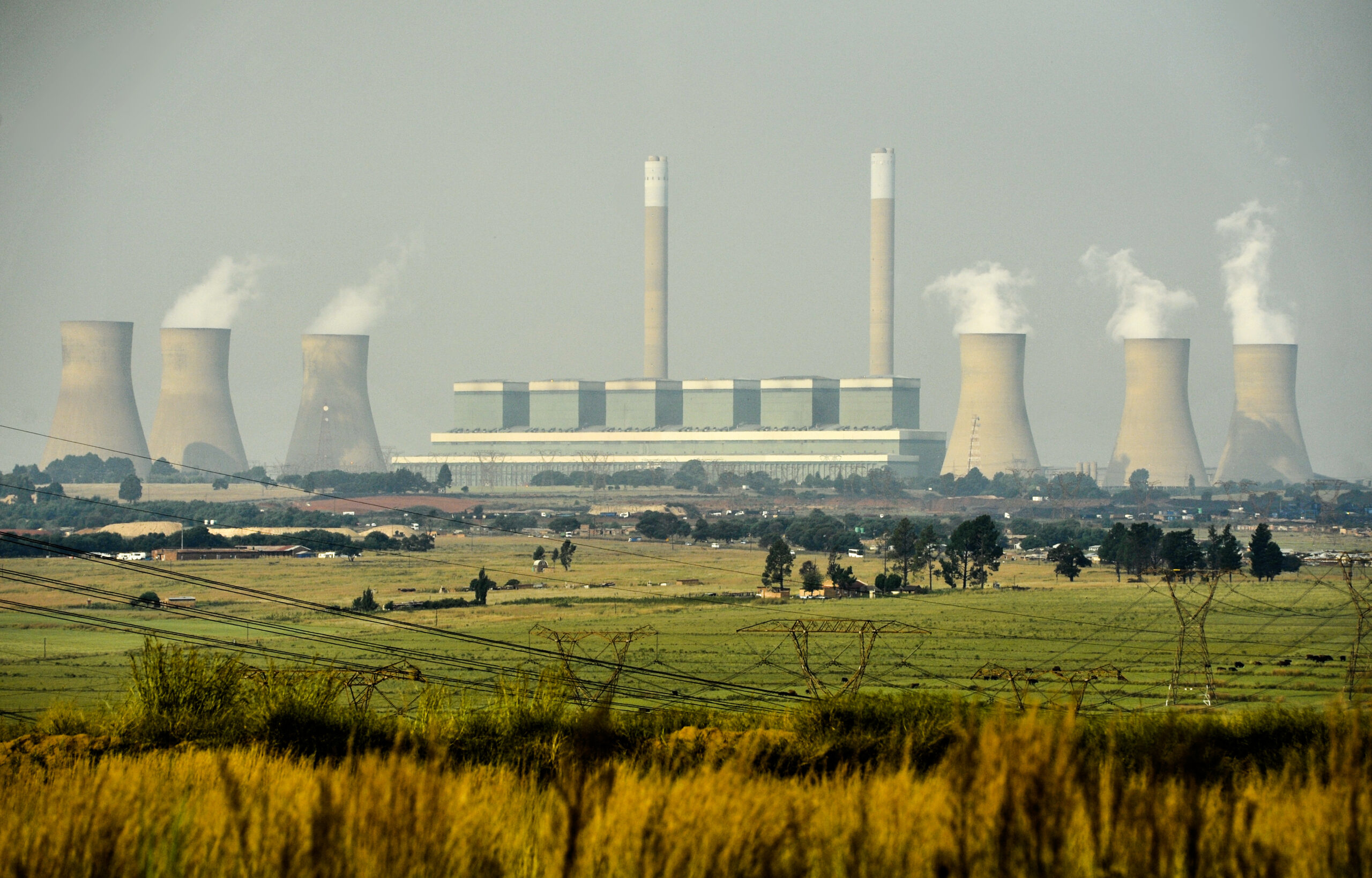The future of coal mining in a green economy
South Africa has ratified the Paris Agreement with plans to combat climate change and provide current and future generations with opportunities to flourish. This means phasing out coal and investing in clean energy and low-carbon industry at an unprecedented scale.
With an enabling political environment, the country’s abundant renewable energy resources could become a central source of social and economic prosperity for communities, families and businesses.
Financial markets are already driving the renewable transition. Many banks now refuse to finance new coal projects. In an effort to secure foreign investment, Eskom is pitching a USD $10 billion plan to shut most of its coal-fired plants by 2050 and embrace renewables, such as wind and solar.
At COP26, The EU, Germany, France, the UK and the US pledged R131 billion to support South Africa in accelerating its green transition and ending its coal reliance. The agreement includes grants, concessional loans and investment risk-sharing instruments. Crucially, the funding targets economic regeneration in coal mining regions and the creation of new job opportunities in green industries.
More coal will not solve the energy and jobs crisis
South Africa’s 2019 Integrated Resource Plan (IRP) maps the future of the country’s energy infrastructure. This includes the decommissioning of coal mines and plants and investing in renewables. “But little has happened since, largely because of resistance from mining unions, populists and politicians who have grown rich selling overpriced coal to Eskom”, reports The Economist.
Gwede Mantashe, the minerals and energy minister and a former mineworker, is among the most prominent of these coal advocates. Mantashe continues to assure South Africa’s coal producers that there will still be significant coal generation in 2030. The country’s acceptance of the R131 billion finance pledge at COP is not yet a done deal, he said.
The 2019 IRP is itself not a direct path to renewables. The plan includes procuring 1.5 GW (gigawatts) of new coal-powered electricity generation. However, a report from the University of Cape Town warns that these plans will cost at least R23 billion more than a least-cost optimal electricity plan for South Africa. It would also result in 25,000 economy-wide job losses by 2030.
“New coal power is not necessary for energy security, is more costly compared to alternatives, and will greatly increase greenhouse gas emissions in a sector where there are cost-competitive and commercially viable alternatives”, states the report.
The cost of any renewable energy plant in South Africa is now at least 30 per cent cheaper than building the cheapest new coal plant. This is according to research by Asset Management organisation FutureGrowth.
Any plans for new coal power will result in more expensive electricity for South Africans and threaten the country’s commitment to climate stability under the Paris Agreement.
Coal mining: Human and environmental rights
Those still supporting the mining sector fail to acknowledge that mining comes at a high environmental and social cost. It often takes place without adequate consultation with, or consent of, local communities. Human Rights Watch reports that people living in mining-affected communities across South Africa are protesting the serious environmental, social and health-related harms of mining. People have been subject to harassment, intimidation or violence due to their activism.
South African photojournalist Daylin Paul, who spent four years documenting the environmental impacts of South Africa’s coal industry, reports the conditions people face living in South Africa’s coal centre. “In Mpumalanga there is dust everywhere. The water is milky. The air is a smoggy brown and it burns your throat to breathe”, said Paul. He reports the lack of basic rights, including access to clean water, air, land to farm and the right to support your family. “Coal is taking a heavy toll in the communities surrounding the country’s coal plants and mines.”
Thousands of people across South Africa extract and sell coal from abandoned, derelict mine shafts and exposed coal seams to survive. These frontline communities suffer the most from polluting coal, and there is a growing environmental movement campaigning for a shift to cleaner energy. In addition to health fears, people worry about their children falling into abandoned open mines or the dams storing toxic byproducts that miners dub ‘Pits of Death’.
“It’s communities living next to these mines that are faced with the ongoing pollution and health risks that these abandoned mines pose”, said Christine Reddell from the South-African non-profit Centre for Environmental Rights (CER).

South Africa’s abandoned coal seams and mines
There are more than 6,000 of these abandoned, ownerless or derelict mines scattered across the country. They have been called “ticking ecological time bombs”. One of the many risks that these unrehabilitated mines pose includes the spontaneous combustion of exposed coal seams. This can lead to toxic air pollution, injury, and the sinking and subsiding of nearby structures. A 2015 report outlines the massive, hidden costs of the country’s mining legacy that continues to pollute the soil, air and water. Rehabilitation costs could reach an excess of R30 billion.
Companies abandon coal mines because officially closing them is costly. Proper rehabilitation of coal mines includes backfilling and sealing old shafts. This is essential to halt the release of carbon dioxide, methane and other polluting greenhouse gases (GHGs). If miners simply walk away, said David Hallowes, a coal researcher at the South-African non-profit groundWork, he declared “you’ve just got a total catastrophe in the making”.
Funds to close the mines are rarely disbursed, as closure certificates are infrequently issued. The Department of Mineral Resources (now the DMRE) are extremely reluctant to put an official stamp on closing mines. This is because it transfers the liability of the mine to them, Hallowes explains. “The Department of Mineral Resources has been totally incapable of closing individual mines”, he said. “A lot of this land is high productive agricultural land, and it’s ruined. End of story.”
A just transition from underground coal mining
The human, environmental and economic costs of coal mining mean the industry is no longer viable. South Africa has abundant renewable energy resources that can power globally competitive green industries. A just and inclusive transition away from coal would establish greater social and economic equality in a cleaner, diversified economy.
Research from Cobenefits outlines the many advantages of a just transition away from coal in South Africa. They include “contributing to the global endeavour to fighting the climate crisis, but also actively contributing to improving people’s health through cleaner air; to poverty eradication by fostering economic prosperity in previously marginalised communities; and creating sustainable jobs in future-oriented sectors, with the opportunity to reconcile gender inequalities in power system-related employment.”
A just transition would also ensure South Africa’s mining industry supports the move away from coal. The industry has given its backing on the proviso it is done gradually and responsibly. “We support the transition to a low-carbon economy and society – contingent on doing it judiciously and systemically”, said Roger Baxter, Chief Executive Officer at Minerals Council South Africa, in a presentation.
As the coal industry is owned and run by the wealthiest groups in society, transparent use of transition funding is needed to ensure frontline communities receive their fair share, said Ani Dasgupta, president and CEO of the World Resources Institute (WRI). “We don’t want a situation where the [just transition] deal results in the same rich people – who benefited from the past system and polluted the world – also benefiting from this transaction”, he added.

Opportunities for low-carbon industries in coal regions
Achieving a just transition to a sustainable future in South Africa will require concrete transition planning for coal workers. This is particularly important in coal centres like Mpumalanga, where some multiplicities depend on coal for up to 40 per cent of economic activity. But, with innovative and careful planning, there are plenty of opportunities for economic diversification and rejuvenation of the region.
Eskom is already seeking proposals on how to “repurpose” retired coal sites into sustainable clean energy hubs to fuel South Africa. These plans could include reusing existing power transmission infrastructure and converting sites for renewable generation or battery storage.
A 2022 study also outlines how ambitious decarbonisation plans in Mpumalanga could create 79,000 regional clean energy jobs by 2030. This number is three times more than the 2019 IRP policy scenario. It also has the potential to be a low-emissions manufacturing hub, for example, for decarbonised iron and steel products powered by green hydrogen.
Environmental rehabilitation of current and legacy coal mines in Mpumalanga would also help to diversify the local economy and create jobs. This includes growing crops like bamboo which would remediate degraded land, says the Just Transition Initiative.
Mine rehabilitation also opens up new agricultural opportunities in Mpumalanga, such as further production of fruits, nuts and other crops. The region is also rich in biodiversity and has sites of historical and cultural significance. This means a commitment to conservation and regeneration, which could rejuvenate coal-dependent municipalities with new tourism opportunities.
Engaging with local stakeholders is crucial to an inclusive transition. This includes underrepresented groups, such as the informal workers extracting coal from abandoned mines, that state they would prefer working in the region’s environmental rehabilitation from coal. Such opportunities would advance the social and economic prosperity of frontline communities contributing to a diversified, greener, cleaner economy.
Related Articles
The bad reason South Africa is making good on emissions targets
If current carbon emission trends continue, South Africa might actually be on track to meet its 2030 emissions targets under the Paris Agreement. This is according to research done by the Department of Forestry, Fisheries and the Environment (DFFE). And the reason for this? Mostly load shedding. The data was revealed in the DFFE’s 2023 […]
Eskom: Green energy saves water
Generating electricity from fossil fuels has a hidden cost: South Africa’s already scarce supply of fresh water.




